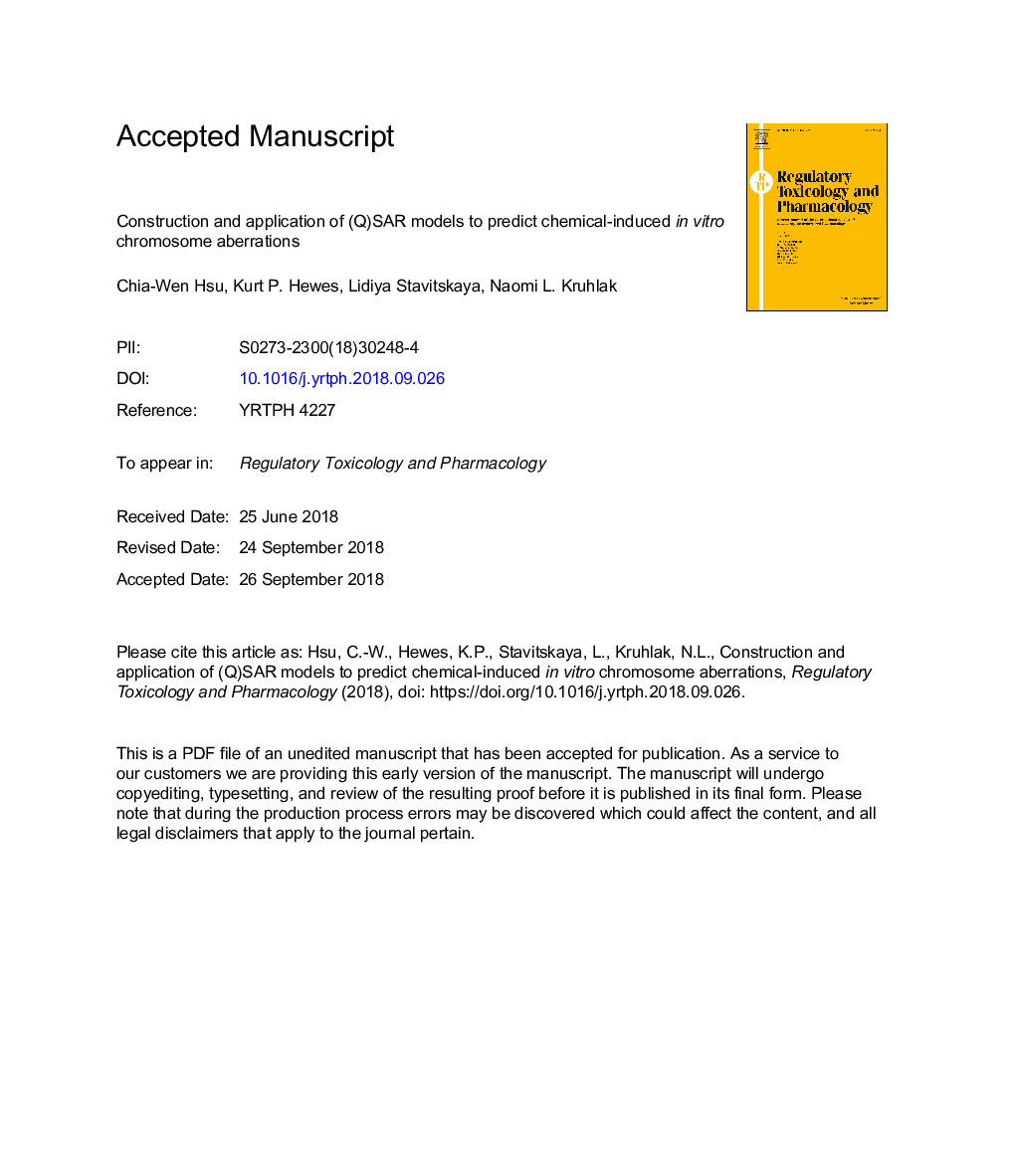| Article ID | Journal | Published Year | Pages | File Type |
|---|---|---|---|---|
| 11031879 | Regulatory Toxicology and Pharmacology | 2018 | 48 Pages |
Abstract
In drug development, genetic toxicology studies are conducted using in vitro and in vivo assays to identify potential mutagenic and clastogenic effects, as outlined in the International Council for Harmonisation (ICH) S2 regulatory guideline. (Quantitative) structure-activity relationship ((Q)SAR) models that predict assay outcomes can be used as an early screen to prioritize pharmaceutical candidates, or later during product development to evaluate safety when experimental data are unavailable or inconclusive. In the current study, two commercial QSAR platforms were used to build models for in vitro chromosomal aberrations in Chinese hamster lung (CHL) and Chinese hamster ovary (CHO) cells. Cross-validated CHL model predictive performance showed sensitivity of 80 and 82%, and negative predictivity of 75 and 76% based on 875 training set compounds. For CHO, sensitivity of 61 and 67% and negative predictivity of 68 and 74% was achieved based on 817 training set compounds. The predictive performance of structural alerts in a commercial expert rule-based SAR software was also investigated and showed positive predictivity of 48-100% for selected alerts. Case studies examining incorrectly-predicted compounds, non-DNA-reactive clastogens, and recently-approved pharmaceuticals are presented, exploring how an investigational approach using similarity searching and expert knowledge can improve upon individual (Q)SAR predictions of the clastogenicity of drugs.
Keywords
Related Topics
Life Sciences
Environmental Science
Health, Toxicology and Mutagenesis
Authors
Chia-Wen Hsu, Kurt P. Hewes, Lidiya Stavitskaya, Naomi L. Kruhlak,
